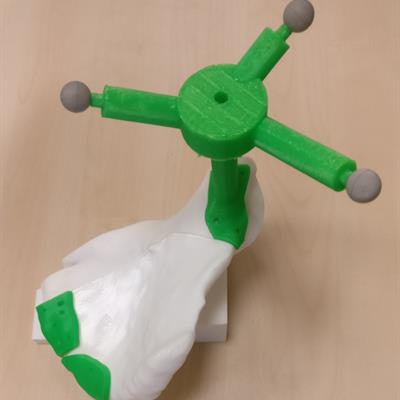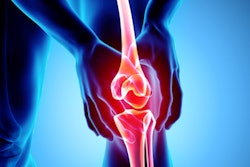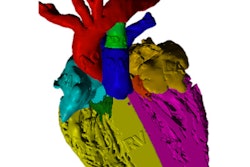
Using 3D-printed surgical guides based on CT scans enabled researchers from Spain to improve the accuracy of, and potentially reduce operating times for, the surgical removal of pelvic tumors in a new study, presented at the recent Computer Assisted Radiology and Surgery (CARS) 2019 congress in Rennes, France.
The group from the Instituto de Investigación Sanitaria Gregorio Marañón in Madrid evaluated the feasibility of utilizing 3D-printed surgical guides in conjunction with surgical navigation via virtual 3D models to facilitate pelvic tumor resection. They found that relying on both technologies helped minimize navigation errors during surgery.
"The combination of 3D printing and surgical navigation facilitates personalized solutions in complex surgical procedures where patient-to-image registration is now the limiting factor in the clinical setting," first author Mónica García-Sevilla told AuntMinnieEurope.com. "Thanks to 3D-printed guides, surgeons can transfer their preoperative planning to the surgical field, where the accuracy of the final result can be measured with navigation."
3D-printed guides
A growing number of clinical trials and case studies are showing that 3D-printed models have the potential to facilitate preoperative planning and even improve surgical outcomes. Swiss investigators, for example, demonstrated the capacity of 3D-printed models to reduce operating times for maxillofacial surgery by as much as 33% in a 2018 study. A separate team from Spain asserted that a 3D-printed model of the chest wall was "essential" for safely removing a complex thoracic tumor.
In addition, various clinicians have taken 3D printing technology into the surgical suite by designing patient-specific 3D-printed templates that they have used to direct surgical incisions. Early research has suggested that such 3D-printed surgical guides may be able to improve the accuracy of surgical cuts but only in areas close to the guide, the researchers noted.
For the current study, García-Sevilla and colleagues sought to expand the possible advantages of incorporating advanced visualization technology into tumor surgery by using a combination of 3D printing and virtual 3D image guidance.
The researchers acquired the CT scans of a patient who had a tumor on the right ilium, or upper pelvic bone, and required two cuts on the bone for effective tumor removal. They used these scans to generate a virtual 3D model and then edited the model with 3D processing software (Meshmixer, Autodesk). They also used the model to create patient-specific 3D-printed surgical guides and templates with a 3D printer (Ultimaker 3 Extended, Ultimaker) and attached retroreflective markers onto the guides for optical tracking.
These tools in hand, the group was able to simulate pelvic tumor resection using four slightly different placements of the 3D-printed surgical guides: only on the lower part of the ilium, only on the upper part of the ilium, on both the lower and upper parts of the ilium, or on the lower part of the ilium along with an additional template on the upper part. They were able to track the 3D-printed guides while performing surgery using a navigational display.
 3D-printed surgical guide and template (green) attached to the pelvic bone (white) for simulating pelvic tumor resection. Image courtesy of Mónica García-Sevilla.
3D-printed surgical guide and template (green) attached to the pelvic bone (white) for simulating pelvic tumor resection. Image courtesy of Mónica García-Sevilla.Valuable tools
Simulating pelvic tumor resection using any of the four different placements for the 3D-printed surgical guide resulted in minimal incision errors, approximately ranging from as low as 0.2 mm to up to 1.19 mm. Among the four techniques, installing the 3D-printed guide on the lower part of the ilium and setting an additional template on the upper part proved to be the most effective one for the surgeons, who ultimately applied this method to actual pelvic tumor resection for the patient.
Using the 3D-printed surgical guide and template allowed the surgical team to maintain few incision errors as their cut extended beyond the starting reference point, according to the group. It also reduced the amount of time it took to register the surgical navigation display to the patient anatomy.
The improvements associated with using 3D-printed guides encouraged the researchers to apply the same concept to other surgical procedures, and they have already begun doing so for oncologic surgery, craniosynostosis, and traumatology, García-Sevilla said. Recently, they have also started combining 3D printing with augmented reality technology to further bolster surgery at Hospital General Universitario Gregorio Marañón.
"For the near future, we want to keep working on improving the accuracy obtained in these surgical scenarios using 3D-printed guides with navigation while introducing more augmented reality solutions in the operating room," she said. "We are currently working on an experiment with cadavers where different configurations of surgical guides are tested with navigation to determine the best solution and accuracy provided based on more data."



















